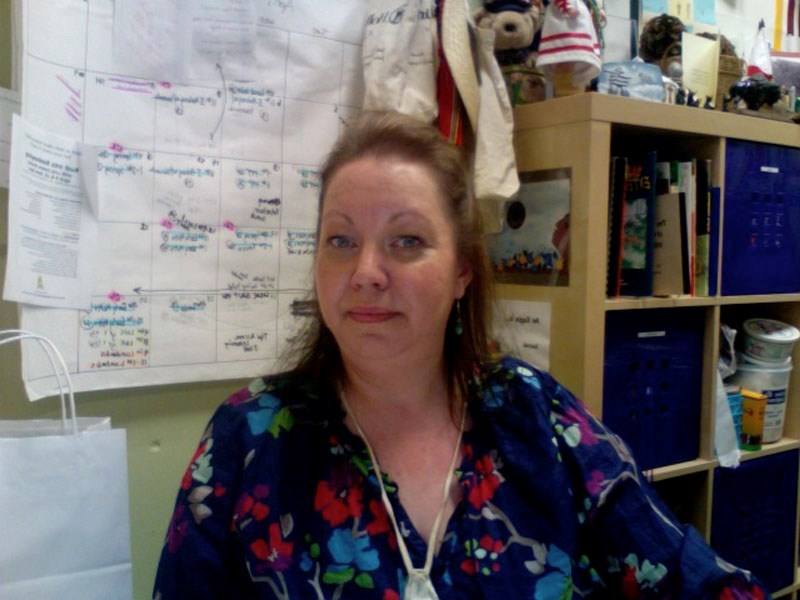A new aboriginal-led grassroots initiative is getting a boost from one St. Albert educator. Sharon Morin, the program manager and aboriginal lead for the Musée Héritage Museum, will be offering an oral history presentation tomorrow evening during the ongoing Amiskwaciy History Series.
She said that she’s honoured and excited to be able to tell the stories in this forum.
“I’ve been talking and teaching about Métis history for over 10 years now,” she began. “I know it says (that it’s about) the Alberta Métis, but St. Albert and this region really tell the story of the Alberta Métis plus the West in a lot of ways.”
The history series offers free monthly educational talks in the hope of providing “accessible and culturally appropriate education to the public on aboriginal history as lived and told by the people.” It’s aimed at creating awareness around the mostly untold Indigenous history of Edmonton.
The first lesson that Morin offered was a geographical one. The name Amiskwaciy comes from ‘Amiskwaciy W?skahikan’ or ‘Beaver Hill House,’ a Cree term used to describe the area now known as Edmonton, she said. The St. Albert Métis were very important to the progress of the development of this area.
“I’m going to focus on the Edmonton area and talk about how Métis worked within the whole region because that’s how the Métis were. The men worked for the Fort – a lot of them. The Fort did not encourage families around there because it was a place of business,” she continued. “There were strong family ties with the Métis people so a lot of them would live in outer communities or other outer regions. St. Albert was one of those regions.”
She said that these Métis people supplied and worked for the Fort by providing pemmican, furs, fish, freighting, and other goods and services.
She clarified that she isn’t a historian. She’s been immersed in Métis culture her whole life.
“I’m more of a storyteller. I tell history through stories.”
Along with her mother, retired Senator Thelma Chalifoux, they started the Michif Cultural and Resource Institute, a Métis living museum and research centre. Morin has made many presentations to school and other groups regarding Métis history. This will be one of her first such talks to a public forum.
She’s excited that she will have the opportunity to tell many otherwise untold stories to a broader audience, some of which will include stories of the land issues during 1885 and the St. Albert Mounted Rifles.
“That’s a story that you don’t hear that out in the country. That’s a very regional story and it’s fascinating. The St. Albert Mounted Rifles were put together to protect the community from Big Bear if there were going to be any skirmishes happening here with the Métis and the government. They were Métis men. They had an inherent right to this community through their Catholic beliefs and through their aboriginal beliefs.”
On her list includes tales of Samuel Cunningham, one of this area’s first politicians, and Victoria Callihoo, the daughter of a medicine woman. She was a young teenager when she went on one of the last buffalo hunts in this area.
“The buffalo hunt was so different then. They would elect generals and have different groups that would do different things like scouting and protecting the camp. Everybody would go on the hunt: men, women, children, dogs. There would be a couple of hundred different Red River carts. It was quite the event.”
Callihoo became a medicine woman herself when she was older. The Musée Héritage Museum has recorded oral histories of both of these people and many others on file for the public to access.
Morin added that these presentations help to dispel a lot of myths and misconceptions about Métis people from history, which in turn helps to further bridge the gap between cultures, one of the important steps in Canada’s Truth and Reconciliation movement.
“It wasn’t just a bunch of bush people fur trading. They were setting up a community. They were entrepreneurs and they were educated,” she said.
Like the rest of the presentations, Morin’s talk will be filmed and will be published online at a later date. People can access those videos at www.youtube.com by searching for ‘Amiskwaciy History Series’.
Details
Alberta Métis History<br />As presented by Sharon Morin<br />Thursday, March 24<br />Edmonton Public Library <br />Stanley Milner Theatre<br />7 Sir Winston Churchill Sq. <br />6:30 to 8:30 p.m.<br />Call 780-868-3784 or visit www.facebook.com/amiskwaciy for more information.




